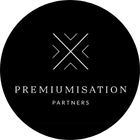.png?lang=en-AU&ext=.png)
By Premiumisation Partners Growth Strategy Experts
Profitable growth relies on both a winning strategy and strong alignment. More than 70% of strategies miss their targets, sometimes because the original thinking was off target, and often because the organisation isn't acting as one. Growth accelerates when leaders, teams, and technology are united around the combination of what customers truly value and a compelling proposition. Alignment isn’t just an organisational objective - it’s the essential driver of performance, and profitability, and as such should sit at the top of management priorities. For businesses looking to create profitable growth, the starting point is building stronger alignment across the following core areas:
1. Customer Alignment: Closing the Value Gap
Most businesses think they know what customers value—but data shows many are 50% off the mark. Customer alignment means deeply understanding your audience’s needs, emotions, and expectations, then shaping every decision around them. When your offer aligns with customer choice factors, you build loyalty, win preference, and sustain profitability.
2. Strategic Alignment: Turning Insight into Advantage
A brilliant strategy means little if it’s not aligned with execution. Strategic alignment ensures that leadership intent, market reality, and customer truth are all connected. Boards and executives who maintain this alignment outperform those who rely on assumptions or intuition. The best organisations use alignment as a measurable, ongoing discipline—not a one-time planning exercise.
3. Human + AI Alignment: The New Frontier of Performance
As AI reshapes decision-making, alignment between humans and machines becomes vital. Data-driven systems can reveal hidden customer insights, but only when guided by human empathy and judgment. Aligning human intuition with AI intelligence helps organisations uncover growth opportunities faster, reduce bias, and strengthen strategic foresight.
4. Brand DNA Alignment: Staying True While Evolving
Your brand DNA—values, story, and promise—anchors trust. But as markets evolve, brands can drift from their core identity. Brand alignment ensures that innovation, messaging, and experience all reinforce the same value narrative customers believe in. When internal culture and external brand expression align, differentiation becomes natural, not forced. Creating your AI Brand Brain – a combination of your DNA, brand voice, and value proposition – is the key starting point to achieve this objective.
5. Team Alignment: The Multiplier Effect
Alignment isn’t just strategic—it’s human. When teams understand how their work connects to customer outcomes and the business vision, engagement and performance soar. Misalignment, on the other hand, erodes trust, slows execution, and drains energy. Regular “alignment checks” across departments turn collaboration into a competitive advantage.
Alignment is the bridge between ambition and achievement, As Jim Collins wrote, “Building a visionary company requires 1% vision and 99% alignment”. It connects strategy with action, technology with humanity, and brand promise with customer experience. When alignment becomes a habit—not an afterthought—organisations not only grow, they thrive. Growth doesn’t just come from doing more; it comes from moving together, in the same direction.
To evaluate the alignment in your business consider completing the following diagnostics on our website (link to premiumisation.com.au/diagnostics):
-
Customer Value Alignment Diagnostic
-
Business Alignment Diagnostic
-
Business Brand DNA

.png?lang=en-AU&ext=.png)

